DPM
I'm playing around with my new tool to visualize learning scenarios. The jigsaw method seems to be a touchstone: Will it be possible to grasp the essential of this famous learning scenario?
A first approach is not very promising:
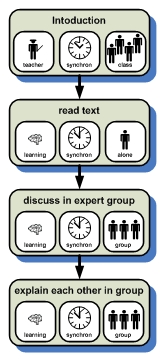
The distribution algorithm into differt groups (expert group and teaching group) is not visible. What if I take the perspective of one learner:
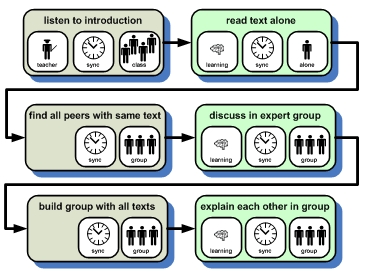
Hmm, I'm not yet convinced. But at least a student now knows what he or she has to do.
I'll keep trying.
IsInEnglish


Are there other visualizations of learning scenarios? Yes there are 
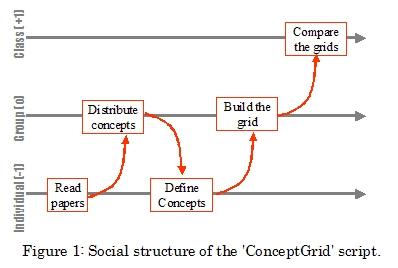
Source: Biblionetz:t06220
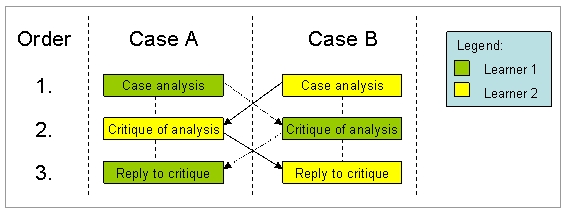
Source: Homepage CoSSicle Project
IsInEnglish

Source: Biblionetz:t06220

Source: Homepage CoSSicle Project
To describe and discuss about learning scenarios a common domain specific language. In his paper Overscripting CSCL (Biblionetz:t02367) Pierre Dillenbourg (Biblionetz:p01285) proposes such a language called collaboration script: 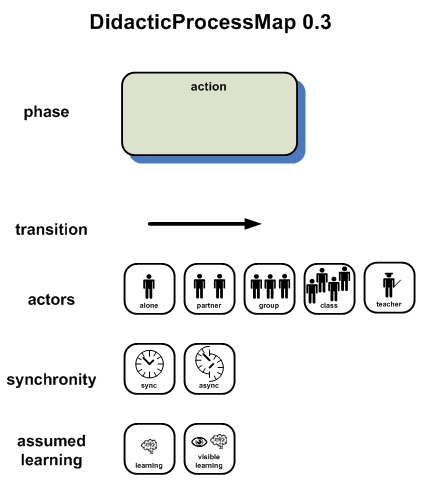
With this elements we can now describe learning scenarios. An example:
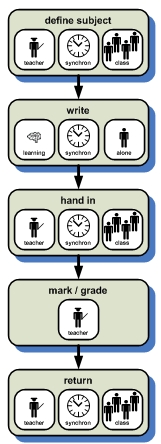
The teacher defines (and explains) the subject of the essay the students have to write. During one single time period each student writes his own essay. At the end of the predefined time period each student hands in his essay. The teacher reads, marks, and grades them. At the end he returns the essays.
What about doing the essay as homework?
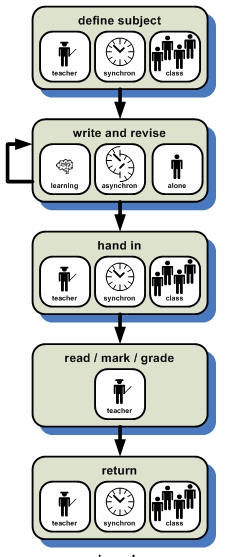
Hmm, and what if the students would write their essay in wiki?
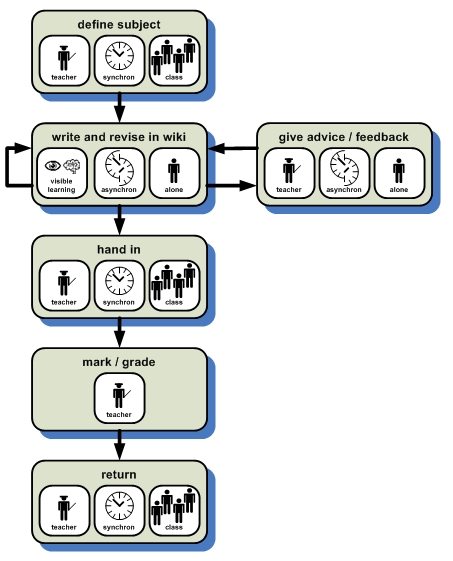
More to come ...
IsInEnglish
- A collaboration consists of sequential phases.
- Each phase is described with five attributes: task, mode of interaction, group, timing, distribution.




Kontakt
- Beat Döbeli Honegger
- Plattenstrasse 80
- CH-8032 Zürich
- E-mail: beat@doebe.li
About me
Social Media
This page was cached on 18 Nov 2025 - 23:36.
